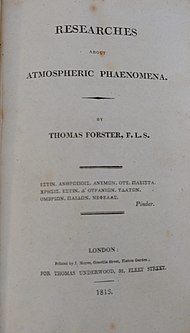
John Abernethy FRS was an English surgeon. He is popularly remembered today for having given his name to the Abernethy biscuit, a coarse-meal baked good meant to aid digestion.

Phrenology is a pseudoscience that involves the measurement of bumps on the skull to predict mental traits. It is based on the concept that the brain is the organ of the mind, and that certain brain areas have localized, specific functions or modules. It was said that the brain was composed of different muscles, so those that were used more often were bigger, resulting in the different skull shapes. This led to the reasoning behind why everyone had bumps on the skull in different locations. The brain "muscles" not being used as frequently remained small and were therefore not present on the exterior of the skull. Although both of those ideas have a basis in reality, phrenology generalize beyond empirical knowledge in a way that departs from science. The central phrenological notion that measuring the contour of the skull can predict personality traits is discredited by empirical research. Developed by German physician Franz Joseph Gall in 1796, the discipline was influential in the 19th century, especially from about 1810 until 1840. The principal British centre for phrenology was Edinburgh, where the Edinburgh Phrenological Society was established in 1820.

Marie Jean Pierre Flourens, father of Gustave Flourens, was a French physiologist, the founder of experimental brain science, and a pioneer in anesthesia.

Franz Josef Gall was a German neuroanatomist, physiologist, and pioneer in the study of the localization of mental functions in the brain.
The year 1810 in science and technology included many events, some of which are listed here.

Johann Gaspar Spurzheim was a German physician who became one of the chief proponents of phrenology, which was developed c. 1800 by Franz Joseph Gall (1758–1828).

George Combe was a Scottish lawyer and a spokesman of the phrenological movement for over 20 years. He founded the Edinburgh Phrenological Society in 1820 and wrote The Constitution of Man (1828). After marriage in 1833, Combe devoted his later years to promoting phrenology internationally.

Andrew Combe was a Scottish physician and phrenologist.
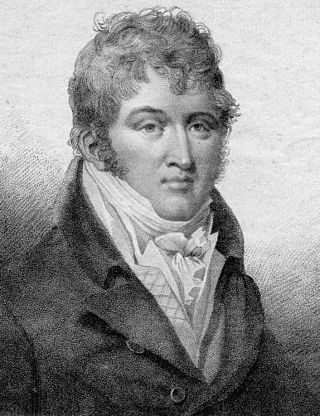
Richard Chenevix was an Irish chemist, mineralogist and playwright who also wrote on a range of other topics. He was known for his sharp cynicism and for engaging in combative criticism.

The Edinburgh Phrenological Society was founded in 1820 by George Combe, an Edinburgh lawyer, with his physician brother Andrew Combe. The Edinburgh Society was the first and foremost phrenology grouping in Great Britain; more than forty phrenological societies followed in other parts of the British Isles. The Society's influence was greatest over its first two decades but declined in the 1840s; the final meeting was recorded in 1870.
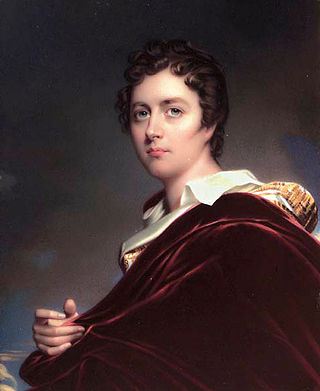
Vegetarianism in the Romantic Era refers to the rise of vegetarianism associated with the Romanticism movement in Western Europe from the eighteenth to the nineteenth century. Many of the late Romantics argued in favor of a more natural diet which excluded animal flesh for a plethora of reasons including the state of human and animal health, religious beliefs, economy and class division, animal rights, literary influence, as well as from new ideas about anthropology, consumerism, and evolution. The modern vegetarian and vegan movements borrow some of the same principles from the late Romantics to promote the adoption of diets free from animal products.
Thomas Furly Forster was an English botanist.
James De Ville was a British lamp maker, sculptor and plaster-caster, known also as a phrenologist. He acquired moulds and busts for business purposes, manufacturing reproductions, and also built up a renowned phrenological collection.

A Vindication of Natural Diet is an 1813 book by Percy Bysshe Shelley on vegetarianism and animal rights. It was first written as part of the notes to Queen Mab, which was privately printed in 1813. Later in the same year the essay was separately published as a pamphlet.

The Boston Phrenological Society was formed in 1832 upon the death of a prominent continental phrenologist, Johann Gaspar Spurzheim. Spurzheim was an anatomist and a former pupil of Franz Josef Gall. Spurzheim's brief tour and death popularized phrenology in the United States outside of its controversial place in medical lecture halls, and into the sphere of social reformers and ministers. The Society's formation launched the phrenology movement in the United States. The Boston Phrenological Society was founded by phrenology adherent Nahum Capen on the day of Spurzheim's funeral, November 17, 1832.
The Zoist: A Journal of Cerebral Physiology & Mesmerism, and Their Applications to Human Welfare was a British journal, devoted to the promotion of the theories and practices of the pseudoscientific concepts of mesmerism and phrenology, and the enterprise of "connecting and harmonizing practical science with little understood laws governing the mental structure of man". The name derived from the Greek word Zoe (ζωή) meaning "life". The Zoist was published quarterly, without a break, for fifteen years: from March 1843 until January 1856.
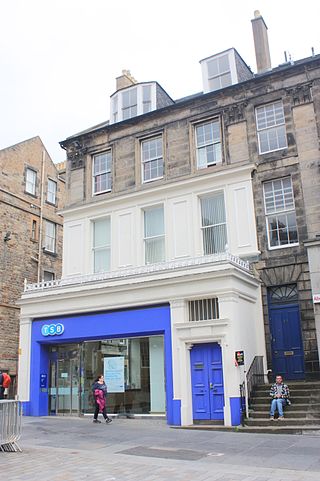
Dr John Gordon FRSE FRCSE was a short-lived but influential Scottish anatomist. In 1806 he served as president of the Royal Medical Society. In 1815 he caused an international stir by debunking the new science of phrenology and publicly criticising its principal European exponents, Johann Spurzheim and Franz Joseph Gall.

Figs or Pigs? is an 1896 manual on vegetarianism and fruitarianism compiled by James Madison Allen, which contains observations from the author, as well as numerous quotations from eminent authors and authorities.
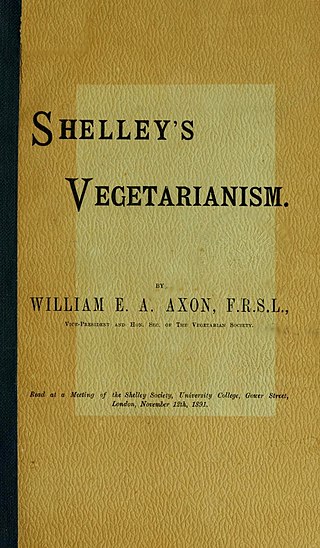
Shelley's Vegetarianism is a 1891 pamphlet on the vegetarianism of Percy Bysshe Shelley by William Axon, published by the Vegetarian Society. It is a printing of a lecture delivered by Axon before the Shelley Society, at University College in 1890.
Moral Inquiries on the Situation of Man and of Brutes is an 1824 book by Lewis Gompertz, an early animal rights advocate and vegan. In the book, Gompertz lays out a moral framework for the treatment of and obligations towards humans and other animals, arguing against the consumption of meat, milk, eggs, silk and leather, denouncing vivisection and arguing for aiding animals suffering in the wild.

